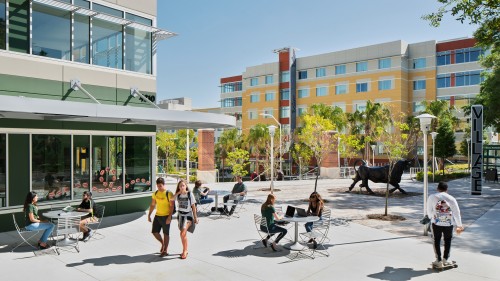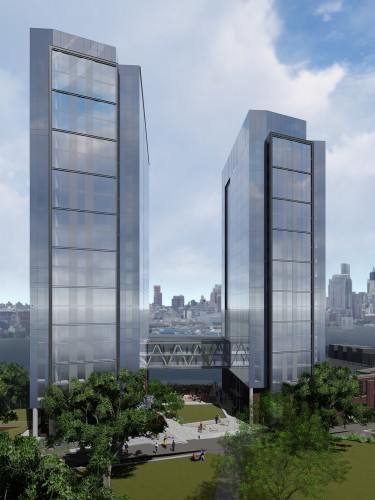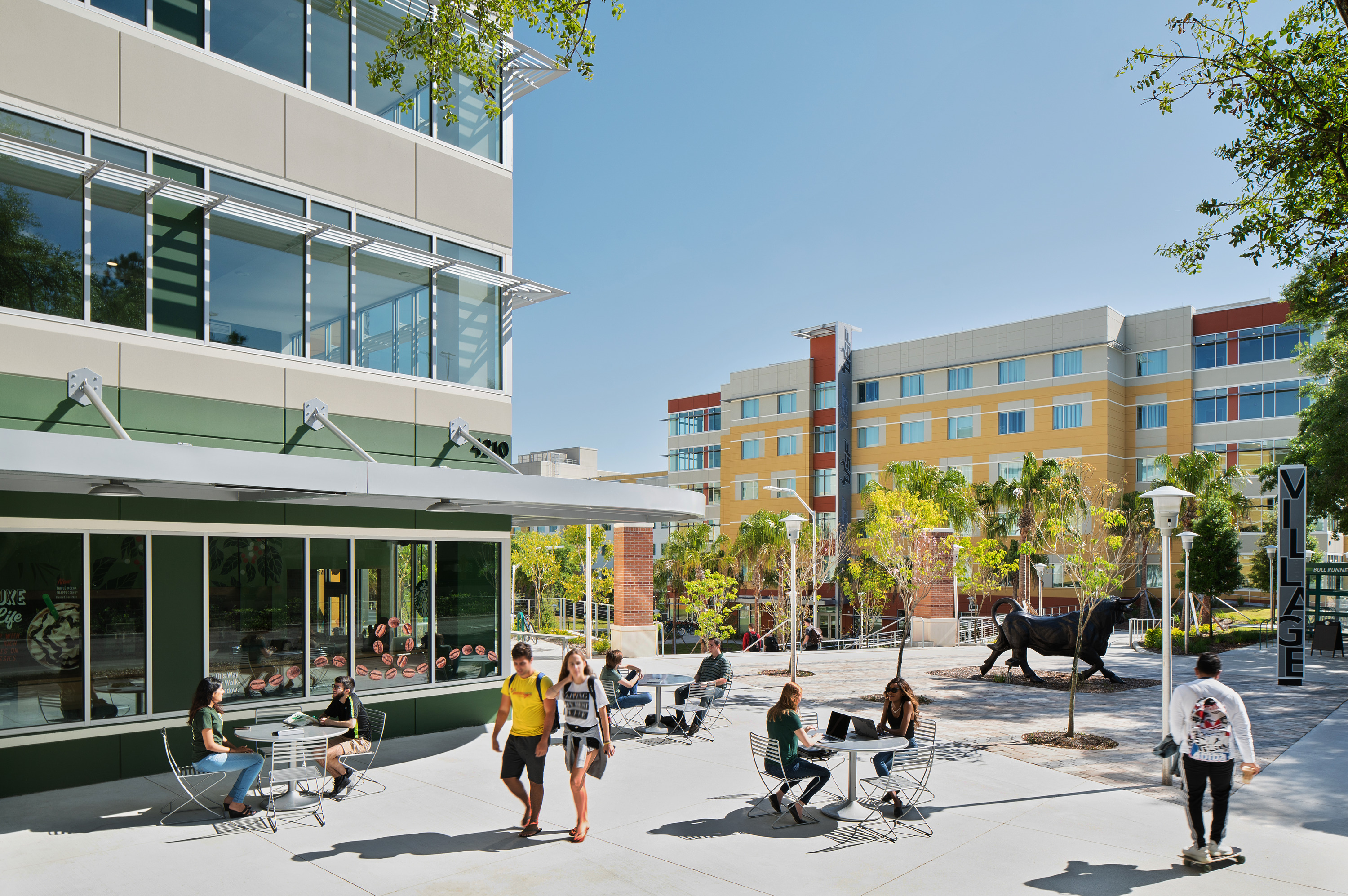
As critical thinkers who often work in the realm of space and design, we love turning our focus to the nuts and bolts of how spaces fit together.
We are problem solvers, working comprehensively to acquire the knowledge that will help us build a positive user experience. While we love research and finding absolute solutions, if we’ve learned anything from the past three months it has been to accept the unpredictable. As the pandemic disrupts the higher education industry, our attention to service and solutions has shifted, and we find ourselves relying on our expertise and experience rather than speculative papers. In this week’s Design in Times of COVID piece, we focus on how universities are shifting their priorities and execution in regard to building materials, building systems, and amenity spaces. In short, we’ve discovered that old and existing spaces simply won’t function with new concerns – it’s time we explore the new reality that will lead us to responsive and responsible solutions.
While Brailsford & Dunlavey and Design Collective’s core services differ, both companies pride themselves on helping clients plan physical assets that will best support their mission and purpose. Michael Quadrino, a Senior Project Manager at B&D, is proud that B&D was “founded on the development of tools and methodologies that guide owners through important decision-making exercises in an unbiased way.” He explains that their approach to clients has evolved, especially recently, with the knowledge that “higher education in particular was likely to come up against big challenges to sustain itself.” We’ve touched on this uncertainty before in thought leadership installations: the undetermined nature of what fall semester will look like, the necessity for online classes, and the potential shift in student housing. Though while short-term planning is quite obviously happening now, our teams are also looking to what might come next, and how we might best prepare ourselves to create long-lasting impact and stability on college campuses.
We all acknowledge that schools are working “countless hours to ensure the health and safety of their students and staff, while also bracing for potential economic impact to their institutions. ” We also know that the current design and construction focus is on projects and procedures that will immediately impact the safety, flexibility, and response to COVID-related wellness. Though in the spirit of professional betterment and preparation, we must recognize the real-time action with an acknowledgement to what comes next. In the spirit of this foresight, Nick Mansperger, a Senior Associate at Design Collective, talks about the positive planning and design changes that can enhance user experience in the longer-term. He wonders if the real-time discussion on planning to prevent illness and contagion may create a surge in design that enhances the physical and social well-being of students, faculty, and staff. This focus on wellness expands beyond campus to streetscapes, where Nick is prepared to see more planning firms work with college-town municipalities to activate enhanced zoning, allow al-fresco dining and retail, and encourage greater social discourse and chance encounters outdoors. We’re already seeing this approach in Baltimore city streets, where outdoor dining and sidewalk pick-up for stores is becoming a local government–tolerated, if not encouraged approach to bring economic benefits back to local vendors.
As we approach longer-term change on campuses, Quadrino from B&D believes the shift in design and construction will reflect institutes of higher education “rethinking their purpose and who they serve,” letting those realizations dictate their planning. He believes higher education clients will be asking themselves some really big questions regarding their mission and purpose in a post-COVID world: who their typical student might be, where they are from, how they access higher education, and what they desire out of it. Any projects on which they embark will then reflect these changes, giving any related variables, like technology, great consideration as they change.
As these variables become clearer, Quadrino believes certain building types may be prioritized, and campuses may shrink or expand depending on the institution. Mansperger also feels the face of campus structures may change. He brings up interior circulation, and how some DCI clients are asking about widening corridors or adding extra elevators for social distancing. He believes designs should play up the “irresistible stair,” relegating elevators to the secondary means of movement. While stairs are often executed as back of house code requirements, design solutions can dramatically celebrate stair design on all project types, hyping up their location and visibility, thereby increasing health and spreading out density. Per code, stairs are already larger than elevators; imagine what might happen if we choose to walk, rather than squeeze ourselves into unventilated metal boxes that divorce us from visibly or socially engaging the multitude of communities within our buildings. Mansperger also speculates on the role of fitness equipment, guessing that it may be spread across campus, both indoors and outdoors, rather than condensed into only a few dedicated buildings.
Quadrino adds that one of the most interesting aspects to watch will be the construction costs. “One would naturally assume that costs will go down as the economy slows and people are out of work. But if this is indeed a quick ‘V-shape’ recession, and if we see escalating factors such as increased jobsite safety requirements, reduced worker productivity, and less access to international manufacturing, costs may hold somewhat steady.”
With so much uncertainty, all we can really control is our response.
“Our reaction to this moment can increase both university fiscal health and student health by enacting simple positive changes to enhance the user experience,” Mansperger says. “I don’t believe we will, or should, drastically change the bricks and sticks of design, but that the design and development industry has a responsibility to provide flexible spaces that meet unforeseen future demands while keeping higher education affordable for the masses.” And while many of us remain in isolation, at some point we will certainly be driven back together. Quadrino cites community development, something that drives him, and something he believes is driven by passion. “While COVID may have cancelled a few community meetings or moved them online for the time being, I have little doubt that passion will be right back in the school auditoriums and multi-purpose rooms as soon as it’s safe to do so.” So while now, we may remain apart and in this undetermined realm of ‘the now,’ our dedication to critical thought and industry insight will prepare us to help campuses and municipalities when they’re ready to explore what’s next.
[1] M. Quadrino
Related News & Projects

